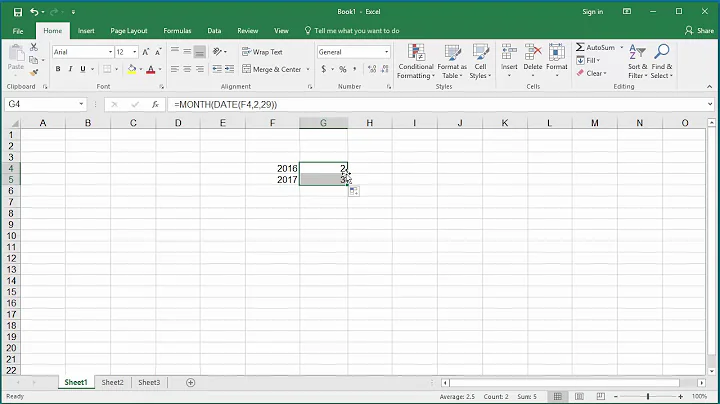Check for leap year
56,416
Solution 1
Check for 29th Feb:
CASE WHEN ISDATE(CAST(@YEAR AS char(4)) + '0229') = 1 THEN 'LEAP YEAR' ELSE 'NORMAL YEAR' END
or use the following rule
CASE WHEN (@YEAR % 4 = 0 AND @YEAR % 100 <> 0) OR @YEAR % 400 = 0 THEN 'LEAP YEAR'...
Solution 2
MOST EFFICIENT LEAP YEAR TEST:
CASE WHEN @YEAR & 3 = 0 AND (@YEAR % 25 <> 0 OR @YEAR & 15 = 0) THEN ...
Adapted from: http://stackoverflow.com/a/11595914/3466415
Solution 3
Leap year calculation:
(@year % 4 = 0) and (@year % 100 != 0) or (@year % 400 = 0)
When this is true, then it is a leap year. Or to put it in case statement
select case when
(
(@year % 4 = 0) and (@year % 100 != 0) or
(@year % 400 = 0)
) then 'LEAP' else 'USUAL' end
;
Solution 4
This could also help
DECLARE @year INT = 2012
SELECT IIF(DAY(EOMONTH(DATEFROMPARTS(@year,2,1))) = 29,1,0)
Result: 1 --(1 if Leap Year, 0 if not)
SELECT IIF(DAY(EOMONTH(DATEFROMPARTS(@year,2,1))) = 29,'Leap year','Not Leap year')
Result: Leap year
Solution 5
Not sure how efficient this is compared to the other solutions. But is another option.
DECLARE @year int = 2016
SELECT CASE
WHEN DATEPART(dayofyear, DATEFROMPARTS(@year, 12, 31)) = 366
THEN 'LEAP'
ELSE 'NOT LEAP'
END
Related videos on Youtube
Comments
-
 t-clausen.dk over 3 years
t-clausen.dk over 3 yearsHow do I check if a year is a leap year?
I have this code:
declare @year int set @year = 1968 SELECT CASE WHEN @YEAR = <LEAPYEAR> THEN 'LEAP YEAR' ELSE 'NORMAL YEAR' ENDExpected result:
LEAP YEAR -
Robert Koritnik about 13 yearsupdated one
ANDthe same as you did in your updated answer. I was just testing it in SQL to prove it. So we kinda both answered with the same calculation. -
Alex almost 10 yearsfirst one is brilliant!
-
Kevin P. Rice about 5 yearsIndeed, the first one is clever; but there's a relatively large hidden computing cost. The second executes significantly faster. Below, I eliminate 2 of the 3 modulus operations, thus eliminating division which is slower than bitwise operations. (See "MOST EFFICIENT LEAP YEAR TEST", infra.)
-
LucasM over 4 yearsPlease use this method as it checks on the full year rather than the accepted answer which initially is only check on the leap year day rather than the full year.











